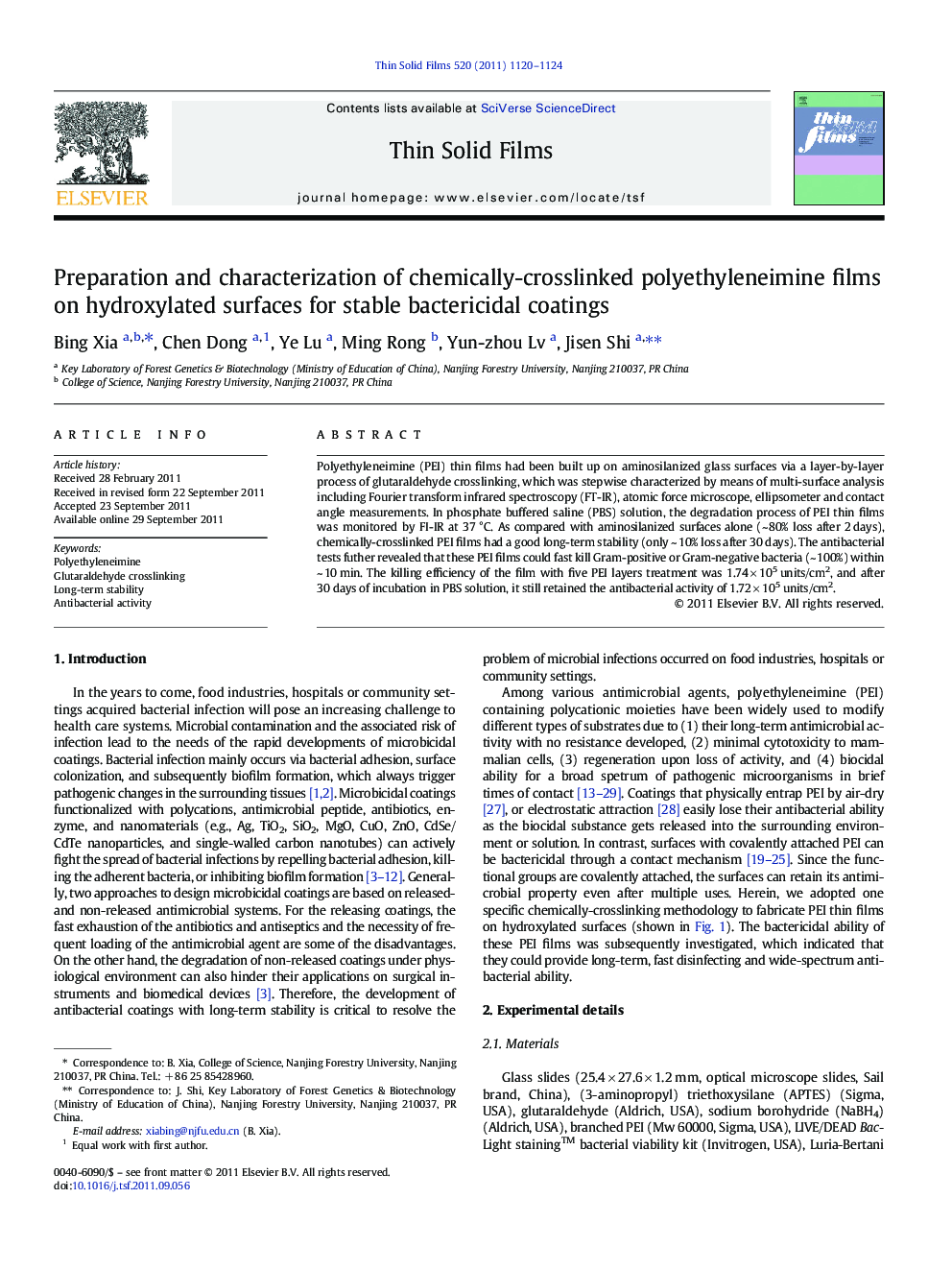| Article ID | Journal | Published Year | Pages | File Type |
|---|---|---|---|---|
| 1668076 | Thin Solid Films | 2011 | 5 Pages |
Polyethyleneimine (PEI) thin films had been built up on aminosilanized glass surfaces via a layer-by-layer process of glutaraldehyde crosslinking, which was stepwise characterized by means of multi-surface analysis including Fourier transform infrared spectroscopy (FT-IR), atomic force microscope, ellipsometer and contact angle measurements. In phosphate buffered saline (PBS) solution, the degradation process of PEI thin films was monitored by FI-IR at 37 °C. As compared with aminosilanized surfaces alone (~ 80% loss after 2 days), chemically-crosslinked PEI films had a good long-term stability (only ~ 10% loss after 30 days). The antibacterial tests futher revealed that these PEI films could fast kill Gram-positive or Gram-negative bacteria (~ 100%) within ~ 10 min. The killing efficiency of the film with five PEI layers treatment was 1.74 × 105 units/cm2, and after 30 days of incubation in PBS solution, it still retained the antibacterial activity of 1.72 × 105 units/cm2.
